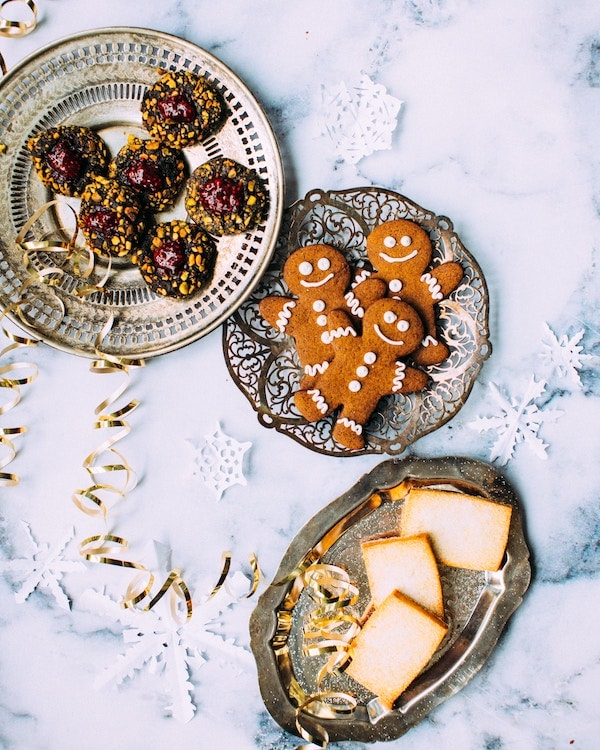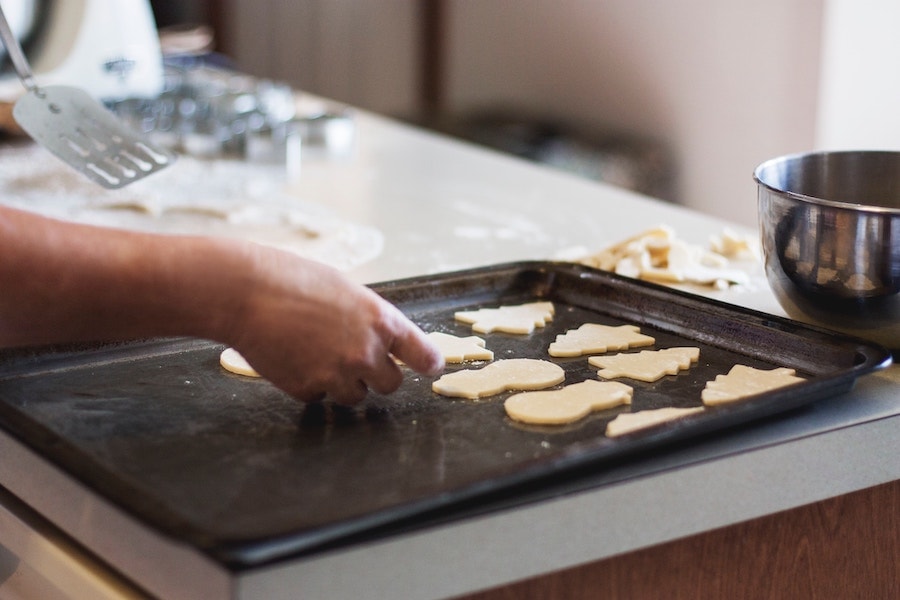
Today I’ve got a special treat for you–a guest post by fellow cookbook author Brette Sember.
Besides her insanely prolific publishing history (with over 40 books to her credit!) Brette’s most recent project is a fascinating ebook called Cookie: A Love Story: Fun Facts, Delicious Stories, Fascinating History, Tasty Recipes, and More.
If you’re at all interested in cookies and want to expand your knowledge of this delicious global tradition, I highly recommend this book.
Please welcome Brette, as she shares with us a brief history of Christmas cookies. She can also be found on her food blog, PuttingItAllontheTable.
Side note: Check this out if you have trouble with crumbly cookies when you bake!
A Brief History of Christmas Cookies
Why do we eat cookies for Christmas? For lots of people, it’s not Christmas without cookies. Our kids leave cookies out for Santa, we spend weeks baking and decorating our cookies, and there’s always a cookie plate at any party.
The gingerbread man has become synonymous with Christmas. But how did cookies come to be such an important symbol of Christmas?
Gingerbread
Cookies have been around a long time (they probably originated as drops of grain paste spilled on hot rocks around a fire), but they became associated with Christmas in Europe in the 1500s.
Gingerbread was a similar food, but laws restricted its baking to guildsman, however at the holidays these regulations were relaxed and people were allowed to bake their own at home, making a very special once a year treat.
Gingerbread originated in the Crusades and was originally made using breadcrumbs, boiled with honey and seasoned heavily with spices. It was pressed onto cookie boards (carved slabs of wood with religious designs) and dried.
Gingerbread evolved to become more secular and to use more modern ingredients. Eventually it became associated with Christmas when speculaas (gingerbread cookies) were made into animal and people shapes and used as holiday decorations.
Cookie Trees
Germans are also responsible for associating Christmas trees with Christmas cookies. As early as 1597, Alsatians hung oblaten (decorated communion wafers) on their tannenbaums.
Americans hung Barnum’s Animal Cracker boxes on trees in the 1800s (the boxes were designed for this purpose). Today some people hang faux gingerbread men on their trees, continuing the tradition.
Cut-Out Cookies
In the more recent history of Christmas cookies, cut-out cookies are now almost universally associated with the holidays in the US. We can trace these cookies back to mumming, a Christmas tradition in colonial areas where the Church of England was influential.
In mumming, Christmas stories were acted out and food was used to help depict the stories. Yule dows were cut-outs made in this tradition, often in the shape of the baby Jesus.
In the 1800s, Pennsylvania Dutch children created large cut out cookies as window decorations. Around this same time, Yule dows became popular again and were called Yule dollies. They were made with tin cutters and shaped like people, elaborately decorated with icing (like today’s gingerbread men).
The face was always made out of a scrap of paper cut out of magazines, which had to be removed before the cookie was eaten. They were controversial because some factions felt the cookies were not religious enough (i.e., not depicting Jesus).
In the 1840s, Santa became associated with Christmas and dollies representing him, with a scrap face, were made. Some of these cookies were so beautifully decorated that they weren’t actually meant to be eaten (like today’s gingerbread houses).
Yet another connection to Santa comes from the Dutch, who believed that pepernoten cookies were thrown around on Christmas by Black Peter, Saint Nicholas’s helper.
Moravian Cookies
Moravians were a Protestant sect that formed in the 1740s and were known for creating pyramids of cookies as Christmas decorations for their Christmas Eve services. Today, spicy Moravian cookies are part of Christmas for many people.
Cookies for Santa
Ever wondered why size-challenged Santa is left cookies to fuel him on his one-night journey? Historians believe the tradition began during the Great Depression, as a way for parents to encourage generosity in their children. The tradition stuck, and Santa isn’t in danger of needing a smaller suit any time soon.
Brette Sember is the author of over 40 books. Her latest is Cookie: A Love Story: Fun Facts, Delicious Stories, Fascinating History, Tasty Recipes, and More.





